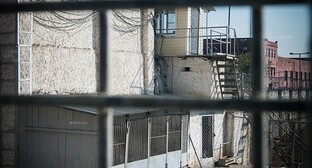21 April 2003, 04:22
Geographic position and natural resources of Stavropol Territory
The Territory is located in the central part of Caucasia near the northern slopes of the Large Caucasus and in the west of Caspian lowland. It borders on Krasnodar Territory, Rostov Region, Kalmykia, Dagestan, Chechnya, North Ossetia, Kabardino-Balkariya and Karachay-Cherkess Republic. Distance from Stavropol to Moscow ? 1621 km. The territory has a well developed transport infrastructure. The length of railway lines of general use ? 928 km, length motorways with hard surface (including departmental roads) ? 14 thousand km. There are three airports, including two international airports ? in Stavropol and Mineralnye Vody. The Territory is crossed with an oil pipeline Zaterechny ? Grozny and gas pipeline Stavropol ? Ukraine ? Moscow ? Saint-Petersburg.
The relief of the territory varies from plains in the north and northeast to foothills and mountains in the south and southwest. The large part of the territory is occupied by Stavropol heights (832 m above the sea level) that borders on parts of Kumo-Manychskaya valley, Caspian and Tersko-Kumskaya lowlands. The slopes of the Large Caucasus occupy the southwest part of the territory.
The climate is moderately continental. The average temperature in January -5?C (in the mountains -10?C), in July from +22 to +25?C (in the mountains +14?C). Annual precipitation on the plains 300 ? 500 mm, at foothills ? over 600 mm. Duration of vegetation season ? 180 ? 185 days.
The rivers in the territory belong to the basins of the Azov and Caspian Seas. The largest of them are Kuban, Yegorlyk, Kuma and Kalaus.
The large part of Stavropol Territory belongs to steppe and semi-desert natural zones. Broad-leaved and coniferous forests occupy only 4% of the territory and grow mostly in the mountains. Steppe in nature condition is covered by motley grass and mat-grass (in the northwest of the territory) or sagebrush, fescue and mat-grass (in the northeast and east). In the far east, in Caspian lowland, the steppe turns into desert covered with gramineous grass and sagebrush. The large part of the steppe is ploughed up and used in agriculture.
The agrarian specialisation of the territory in many respects was determined by availability of fertile soils: more than 41% of the territory is occupied by chernozem most productive for agriculture, 52% by chestnut soils.
The mineral raw resources of the territory are quite various. The main are natural gas, oil, copper, complex ore, coal, mineral building materials (dolomite, limestone, gypsum, various clay, coquina, glass sand products, etc.). The reservoirs of barite, asbestos, glauberite, salt, medical mineral muds were found. The waters from the springs in the region of Caucasian Mineralnye Vody are widely known for the healing properties (especially Narzan and Yessentuki).
The territory produces natural gas, oil (in the east), non-ferrous metals and coal (in the mountains). Most largest fields of gas ? Mirnenskoye, Sengileyevskoye, Severo-Stavropolsko-Pelagiadinskoye; oil ? Praskoveyskoye; copper ? Urupskoye; complex ore ? Elbrusskoye; coal ? Khumarinskoye.
The oil and gas resources of Stavropol Territory are only half-developed. Approximately 66 million tons of oil reserves and 43 billion cubic metres of gas are ready for industrial production; 168 million tons of oil and 22 billion cubic metres of gas constitute the so-called potential reserves. The oil production is conducted by the company "Rosneft-Stavropolneftegaz", the annual output in 1996 was 800 thousand tons, in 1997 ? 847 thousand tons. According to some estimations, the oil production in the nearest future may be increased to 1 million tons. 13 fields of natural gas are developed. The average annual production of natural gas is 345 ? 360 million cubic metres and it can also be increased.
The commercial reserves of gas at Takhta-Kugultinskoye and Mirnenskoye fields are ready for mining. Sengileyevsko-Nadzornenskoye field besides gas presumably has oil reserves.
The territory is extremely rich in healing mineral waters. Only 11% of their total reserves suitable for industrial development which constitutes 12,450 cubic metres per day is used, and in the region of Caucasian Mineralnye Vody ? only half of the reserves is used.
Reserves of explored raw materials for brick and tile production ? 90 million cubic metres, expanded clay ? 12 million cubic metres, silicate products ? 125 million cubic metres, sand and gravel materials ? 290 million cubic metres, building stone ? 170 million cubic metres, glass ? 4.6 million tons.
The recreational resources of Stavropol Territory are of national importance. They used to be an important source of revenue for the territory budget. The large sanatorium and tourist complex is located in the region of Caucasian Mineralnye Vody where the climate and balneal conditions are most favourable. Famous health resorts are Pyatigorsk, Kislovodsk, Zheleznovodsk, Yessentuki.
Source: I.G. Kosikov, L.S. Kosikova. North Caucasia: Social and Economic Reference Book




